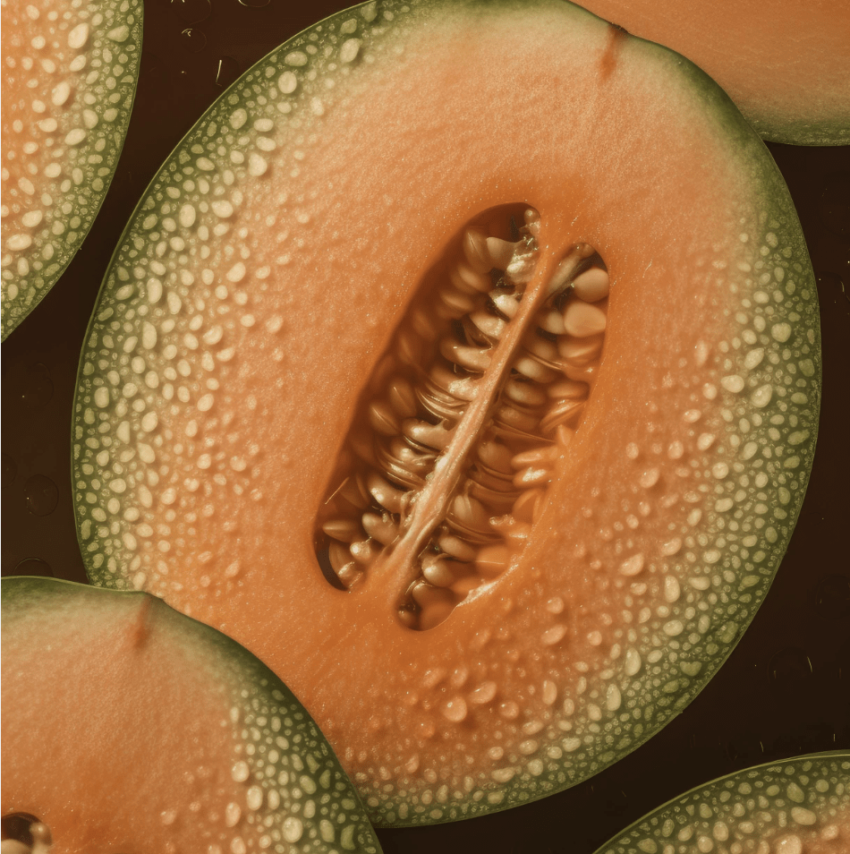- Consumers, restaurants, retailers, and wholesalers should not eat, sell, or serve recalled cantaloupe or recalled products containing cantaloupe.
- Consumers with frozen or cantaloupe products for later use should check their freezers and discard any recalled products.
- Do not eat or use it if you cannot tell if your cantaloupe is part of the recall. Throw it away.
The affected cantaloupe products were distributed from October 19th through October 20th, 2023, and sold in Minnesota, North Dakota, South Dakota, and Wisconsin at convenience stores, delis, and business cafes. These products are beyond their usable shelf-life and are no longer expected to be in commerce.
| BRAND | ITEM DESCRIPTION | Item Number | PACK / SIZE | LOT CODE |
| Created Fresh! | CANTALOUPE FRUIT CUP GRAB N’ GO | 19703 | 5.75 OZ EACH | SELL BY DATES OF 10/25/2023 AND 10/26/2023 |
| Created Fresh! | MIXED FRUIT CUP GRAB N’ GO | 19721 | 5.75 OZ EACH | SELL BY DATES OF 10/25/2023 AND 10/26/2023 |
| Jack & Olive | MIXED FRUIT CUP J&O | 23355 | 5.75 OZ EACH | SELL BY DATES OF 10/25/2023 AND 10/26/2023 |
The recall was initiated after a supplier notified Bix Produce that they had delivered recalled Malachita cantaloupes to Bix Produce and that those had been processed and distributed by Bix Produce.
There are ongoing outbreaks in the United States and Canada traced to Malachita brand cantaloupe imported from Mexico. In the United States, there are 99 confirmed patients, with 45 of them having been admitted to hospitals. Two people have died.
…article continued below
– Advertisement –
Customers who have any questions about the recall may call 651-487-8000.
(To sign up for a free subscription to Food Safety News,click here)
Signs and symptoms of salmonella infection
By Deb Balzer, November 27, 2023
MAYO CLINIC NEWS NETWORK – A salmonella outbreak in North America is being linked to cantaloupe, according to the Centers for Disease Control and Prevention.
Salmonella infection, or salmonellosis, is a common bacterial disease that affects the intestinal tract. Salmonella bacteria typically live in animal and human intestines and are shed through feces. Humans become infected most frequently through contaminated water or food.
…article continued below
– Advertisement –
Typically, people with salmonella infection have no symptoms. Others develop diarrhea, fever and abdominal cramps within eight to 72 hours. Most healthy people recover within a few days without specific treatment.
In some cases, diarrhea associated with salmonella infection can be so dehydrating that it requires prompt medical attention. Life-threatening complications also can develop if the infection spreads beyond your intestines. Your risk of acquiring salmonella infection is higher if you travel to countries with poor sanitation.
Symptoms of salmonella infection
Most salmonella infections can be classified as stomach flu, or gastroenteritis. The incubation period ranges from several hours to two days.
Possible signs and symptoms of salmonella infection include:
- Nausea
- Vomiting
- Abdominal cramps
- Diarrhea
- Fever
- Chills
- Headache
- Blood in the stool
The symptoms generally last two to seven days. Diarrhea can last up to 10 days, although it may take several months before bowels return to normal.
A few varieties of salmonella bacteria can cause typhoid fever, a sometimes deadly disease that is more common in developing countries.
Causes of salmonella infection
Salmonella bacteria live in the intestines of people, animals and birds. Most people are infected with salmonella by eating foods that have been contaminated by feces.
Commonly infected foods include:
- Raw meat, poultry and seafood: Feces may get onto raw meat and poultry during the butchering process. Seafood may be contaminated if harvested from contaminated water.
- Raw eggs: While an egg’s shell may seem to be a perfect barrier to contamination, some infected chickens produce eggs that contain salmonella before the shell is even formed. Raw eggs are used in homemade versions of mayonnaise and hollandaise sauce.
- Fruits and vegetables: Some fresh produce, particularly imported varieties, may be hydrated in the field or washed during processing with water contaminated with salmonella. Contamination also can occur in the kitchen, when juices from raw meat and poultry come into contact with uncooked foods, such as salads. SOURCE.
